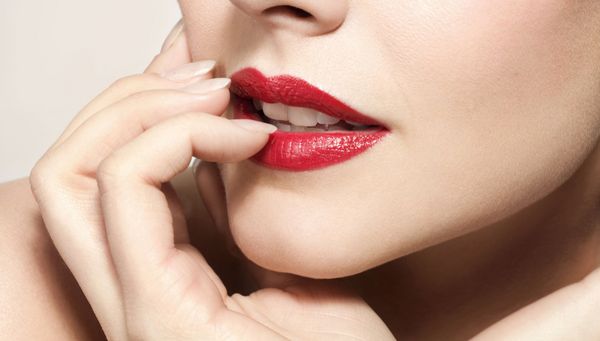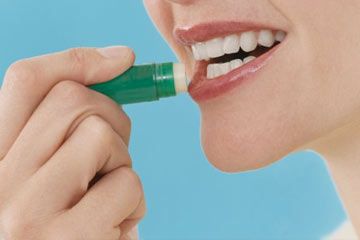Women have been applying color to their lips in roughly the same fashion since 1923 -- when an American invented the twist-up lipstick tube [source: Cosmetics and Skin]. However, thanks to the advent of lip stain, there are a number of newer lip-dressing options.
Lipstick's main ingredients are waxes and oils; other ingredients include pigment to achieve a specific color, as well as emollients to help keep lips moist [source: Johnson]. In contrast to lipstick's waxy base, lip stain is mostly water or gel, although some products do include natural plant oils or mineral oil. Synthetic dyes -- or natural ingredients like henna -- are added to stain the lips for up to 18 hours [source: Schaefer]. This long-wearing, smudge-proof effect is one of the primary differences between lipstick and lip stain. The way lip stain is applied comes in a close second.
Advertisement
Because lip stain is a less viscous formula than lipstick, it can come in several forms: roll-on, gel with sponge-tip applicator or marker-like tube with color-infused tip. No matter the application method, you'll need to work fast. Many lip stains contain alcohol, and this makes them set quickly -- almost as soon as they touch the lips [source: Michalak]. Alcohol also has a drying effect, so you may find yourself exfoliating and moisturizing the skin on your lips a little more often.
Lip stains also offer fewer color choices than lipstick does. The stains are meant to enhance natural tones, so they're found most often in red, pink and peach hues. Lipstick, however, is manufactured in an array of colors, from the palest pink to deep shades of red and purple. Lipstick has a few other variations lip stain doesn't: shine, matte or pearl-like finishes and moisture-rich ingredients such as vitamin E or aloe vera [source: Johnson]. These emollients give lipstick a line-smoothing illusion that lip stain -- with its watery base -- just can't provide.
To get a plump-and-pouty look from lip stain, you'll need to first apply a thin layer of lip balm for moisture. Then, smooth on the lip stain. Even one layer should last for several hours, but you can get more intense color by applying several layers, and then topping your lips with a gloss. Because lip stain doesn't contain as much oil or emollient as lipstick, it isn't as apt to create feathery lines outside the lip's bounds -- so you can probably skip the lip liner [source: Michalak].
While lipstick and lip stain cost about the same, in the long run you'll end up buying greater quantities of lipstick. Why? Lipstick must be reapplied more often, so you'll need to replace it more often -- which translates into greater cost. Lip stain, however, can be applied in the morning and may last all day. When you're ready to remove it for good, a bit of over-the-counter makeup remover will do the trick.
Although lipstick and lip stain both add color, they have decidedly different appeal. The former preserves moisture, but doesn't last all day. The latter lasts all day, but creates dryness. The good news, however, is that there are plenty of options to choose from, no matter what your preference.
Advertisement


